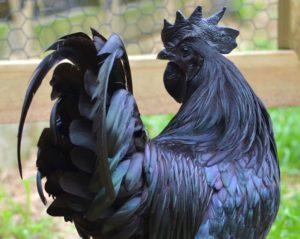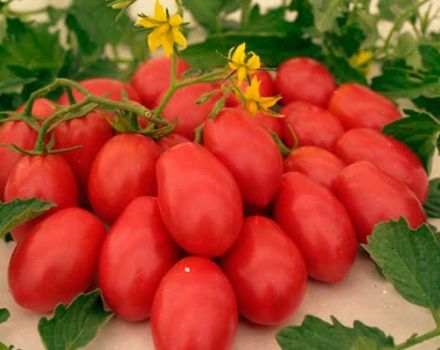Description and rules for keeping chickens of the Aurora breed
The Aurora chicken breed is considered very popular. These birds are distinguished by excellent productivity and unpretentiousness. Nevertheless, for the normal development of chickens, they should provide suitable housing conditions. For this, it is recommended to properly equip the chicken coop, to make an open-air cage for walking. Equally important is balanced and high-quality nutrition, which is selected depending on the age of the chickens.
Breeding history
There is no exact information regarding the breeding of these chickens. It is known that this is a Russian breed, which was obtained by the breeders of VNIIGRZH. Australorpes were selected to breed the birds. At the same time, scientists tried to get a universal breed.
As a result, it was possible to breed a breed group characterized by excellent egg production parameters and unusual external features. That is why chickens Aurora simultaneously belong to the decorative and egg direction..
Description and characteristics of the breed
Before breeding birds, you should familiarize yourself with their key characteristics. They are characterized by an unusual appearance and high productivity.
Appearance of chickens Aurora
Birds of this breed are characterized by an elongated body and harmonious constitution. The brood hens have small heads and short necks. For roosters, larger heads are characteristic. Regardless of gender, the head is decorated with a bright leaf-shaped comb.
Feathered are distinguished by large eyes of brown or orange color and a small beak of gray-blue color. The plumage has a spectacular appearance - it has a blue tint with a dark border. Females' feathers are uniform in color. In roosters, the back and wings have a darker shade.
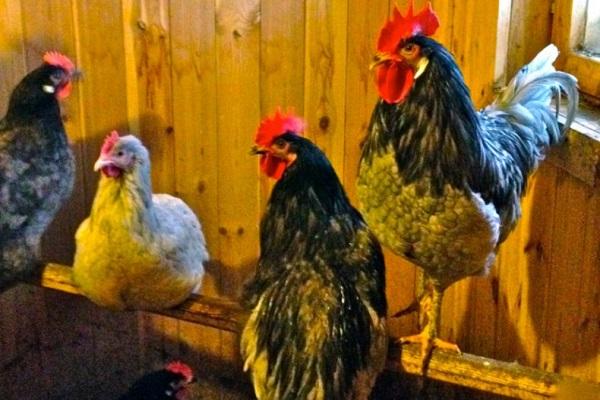
It is recommended to judge the health of the bird by the shade of the scallop. If it acquires a pale pink hue, this indicates the development of pathology or a violation of the conditions for keeping birds.
The nature of the birds
Birds of this breed have a difficult character. They are rather shy and careful. Chickens keep away from humans, including their owners. At the same time, birds are very active and curious. They do not conflict with representatives of other breeds.
Incubation instinct
The brooding instinct is not very well developed for this breed. At the same time, poultry farmers practically do not breed birds on their own, since this method does not allow preserving the characteristics of the breed.
To renew the livestock, young animals should be bought or raised in an incubator.
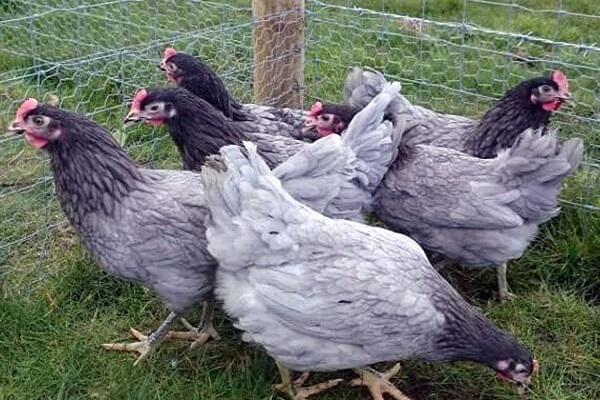
Productive qualities of the breed
This breed is considered to be quite productive. Performance parameters are mainly assessed by bird egg production.
Live weight of chicken and rooster
The birds of this breed are compact in size. Roosters, on average, weigh 2.5-3 kilograms. In this case, the weight of chickens is 2-2.5 kilograms.
Sexual maturity and average annual egg production
Birds begin to lay at 4 months. This period depends on the time of the year in which the chick was born. Experts say that sexual maturity occurs faster in chickens that hatched in February-March. This is due to the length of daylight hours.
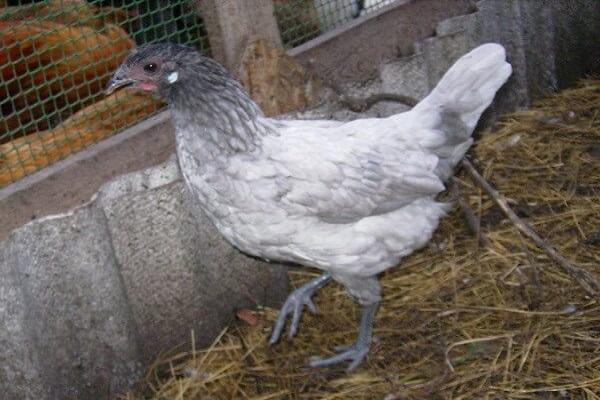
The maximum egg production occurs at 1 year. Subsequently, this parameter decreases by 15-20% every year. The average productivity of a layer is 200-220 eggs per year. Egg weight reaches 55-58 grams. They are covered with a white shell.
Advantages and disadvantages
The main advantages of birds include the following:
- attractive external characteristics;
- good productivity;
- resistance to low temperatures.
Moreover, the birds of this breed also have certain disadvantages:
- change in appearance in the next generations;
- insufficiently pronounced incubation instinct.
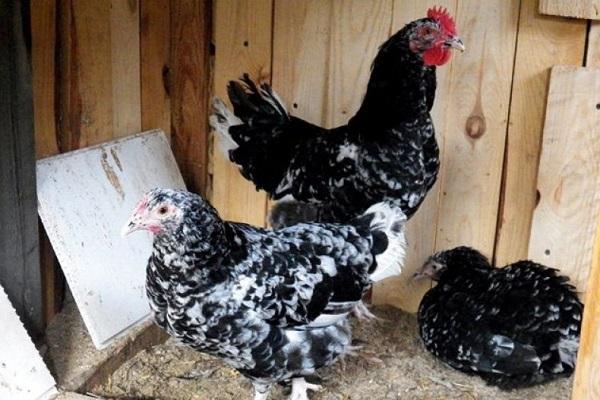
Maintenance and care of birds
In order for the birds to develop normally and not get sick, it is recommended that they provide suitable housing conditions.
What should be the chicken coop?
Chickens of this breed can live in unheated poultry houses. However, maintaining a stable temperature at a level of + 23-25 degrees can significantly increase the productivity of birds. In winter, the temperature should not be less than +15 degrees.
For chickens of the Aurora breed, it is worth equipping a spacious room. 2-3 birds should have at least 1 square meter of area.
Layers love multi-level perches.
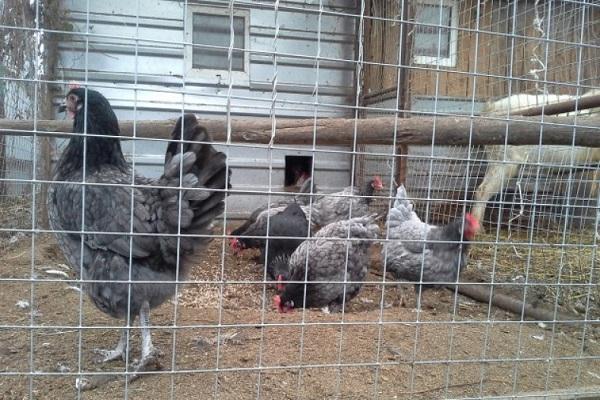
Keeping the coop clean and dry is also important. High humidity and dirt provoke a drop in egg production and the appearance of diseases. Experts advise to often carry out pest control and vaccinate birds against major infections.
The house should have at least 1 window for fresh air and natural light. If there are no windows, good ventilation should be provided.
Chickens require long daylight hours. It must be at least 16 hours long. Therefore, it is recommended to use additional light sources in winter. During molting, the duration of daylight hours is reduced.
The house should have nests - at least one for 5-6 chickens. Place a litter on the floor. It is made from hay or straw. It is also permissible to use sawdust or other materials. In winter, the thickness of such a layer should be at least 50 centimeters. It is recommended to change the litter systematically.
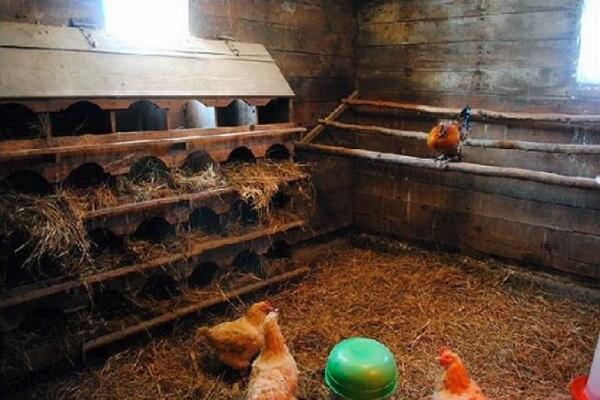
Can I breed in cages?
Farmers today often raise chickens in cages. Although many consider this method inhumane. It should be borne in mind that this method is recommended only for raising a large number of birds, since it is associated with significant costs. When kept in close quarters, the performance parameters of layers will decrease.
It is permissible to keep 5-7 individuals in 1 cage. It should be borne in mind that such chickens are less immune. This is due to lack of air, sunlight, movement.
Place for walking
If possible, it is recommended to make an aviary for walking birds. This site should be fairly free. 1 hen must have at least 1 square meter of area.
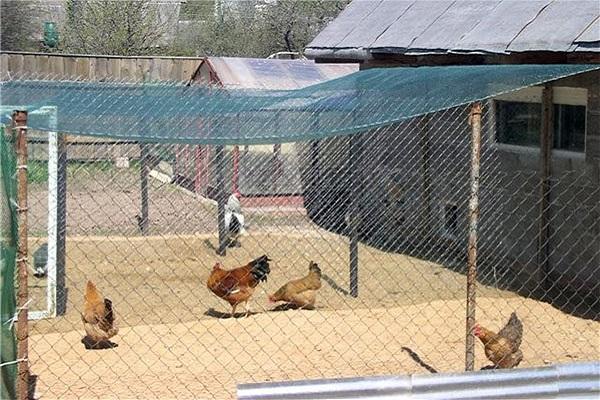
It is desirable that the aviary is located under the trees. It should be covered with a net and a canopy. This will help the birds hide from the rain. Feeders and drinkers are placed in the yard for walking.
Feeders and drinkers for chickens
Drinkers and feeders must be present in the chicken coop. Drinkers should have a capacity of 5-6 liters. The size of the feeders depends on the number of birds. There should be at least 10-15 centimeters per individual.
What do birds eat?
For birds to develop normally and rush well, they should eat right. The diet of chickens depends on age.
Chickens
At the initial stage of development, the chicks are given a mash. It is made on the basis of herbs, eggs and cereals. When the chickens grow up a little, vegetables, cottage cheese, yeast should be added to their diet. The adult menu is permissible to be introduced at 2 months.

Adults
Such birds need the following diet:
- 60-65 grams of cereals in summer, 70-75 grams - in winter, and the basis of the diet should be wheat;
- 20-25 grams of bran;
- 5 grams of fishmeal;
- 100 grams of vegetables;
- 1 gram of salt.
It is recommended to strictly observe the dosage of food. If the bird gets too much or too little food, it will get sick. For winter, food should be prepared in advance. This will require zucchini, cabbage, pumpkin. Dried hay and sunflower cake are also used.
It should be borne in mind that birds require a sufficient amount of water. If the chickens lack fluid, this will reduce their performance. Therefore, there should be drinking bowls in the hen house and walking yard. The water in them should be changed every day..

During molting
This period falls in October and November. At the same time, the productivity of chickens decreases. This is due to the large expenditure of body resources for the growth of new feathers.
During this period, birds need a lot of protein. Therefore, they are advised to give a mash based on meat broth. Also, dairy products should be introduced into the diet of chickens. They are often given cottage cheese or yogurt.
Boiled vegetables and chalk are of great importance for the normal development of birds. They are also given minerals and vitamins. If birds are unable to walk, they should be given sand and clay.
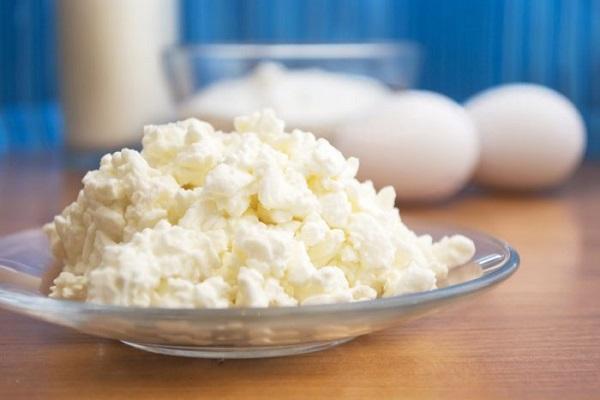
Planned herd replacement
It is impossible to remove young animals with the same characteristics as those of their parents. Therefore, with a planned replacement of livestock, it is worth buying chicks. It is recommended to do this in proven nurseries. The decrease in the productive characteristics of birds occurs in the third year. It is during this period that the replacement of chickens should be carried out.

Frequent illnesses
Chickens of the Aurora breed are faced with the development of various diseases. Pathologies are often caused by improper care. Sometimes contact with rodents or wild birds, which spread infections, are provoking factors.
To minimize the likelihood of developing diseases, pest control is systematically performed. Maintaining hygiene and proper and balanced nutrition is also important. It is definitely worth vaccinating the herd. Vaccinations help protect chickens from common pathologies.
Chickens of the Aurora breed are very popular with farmers. These birds are highly productive and resistant to low temperatures. To achieve good results in raising birds, they should be provided with quality care.

